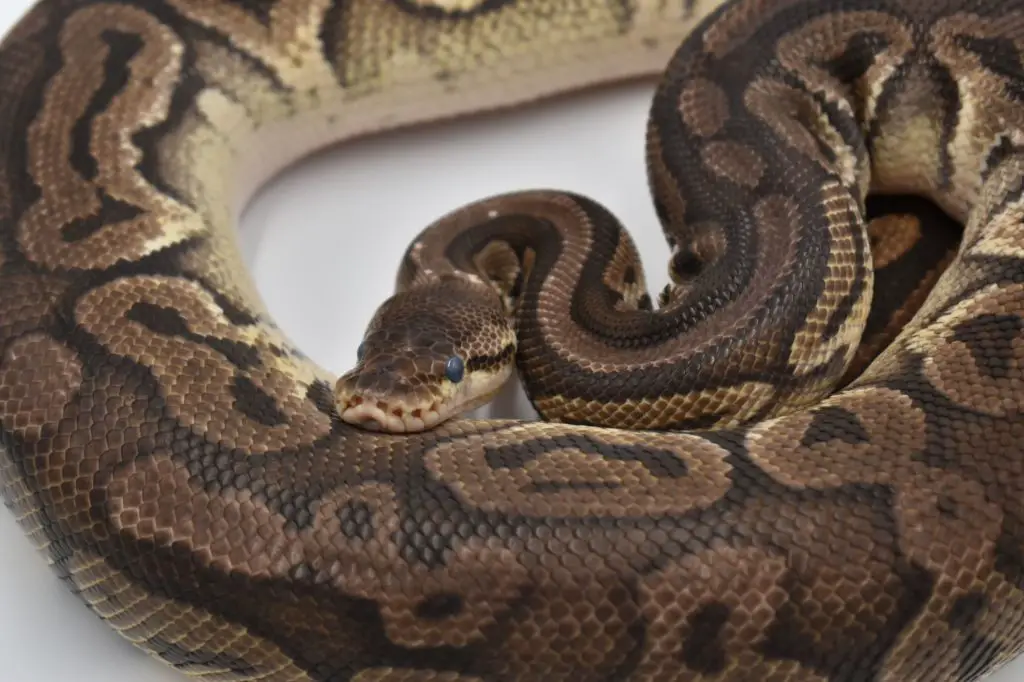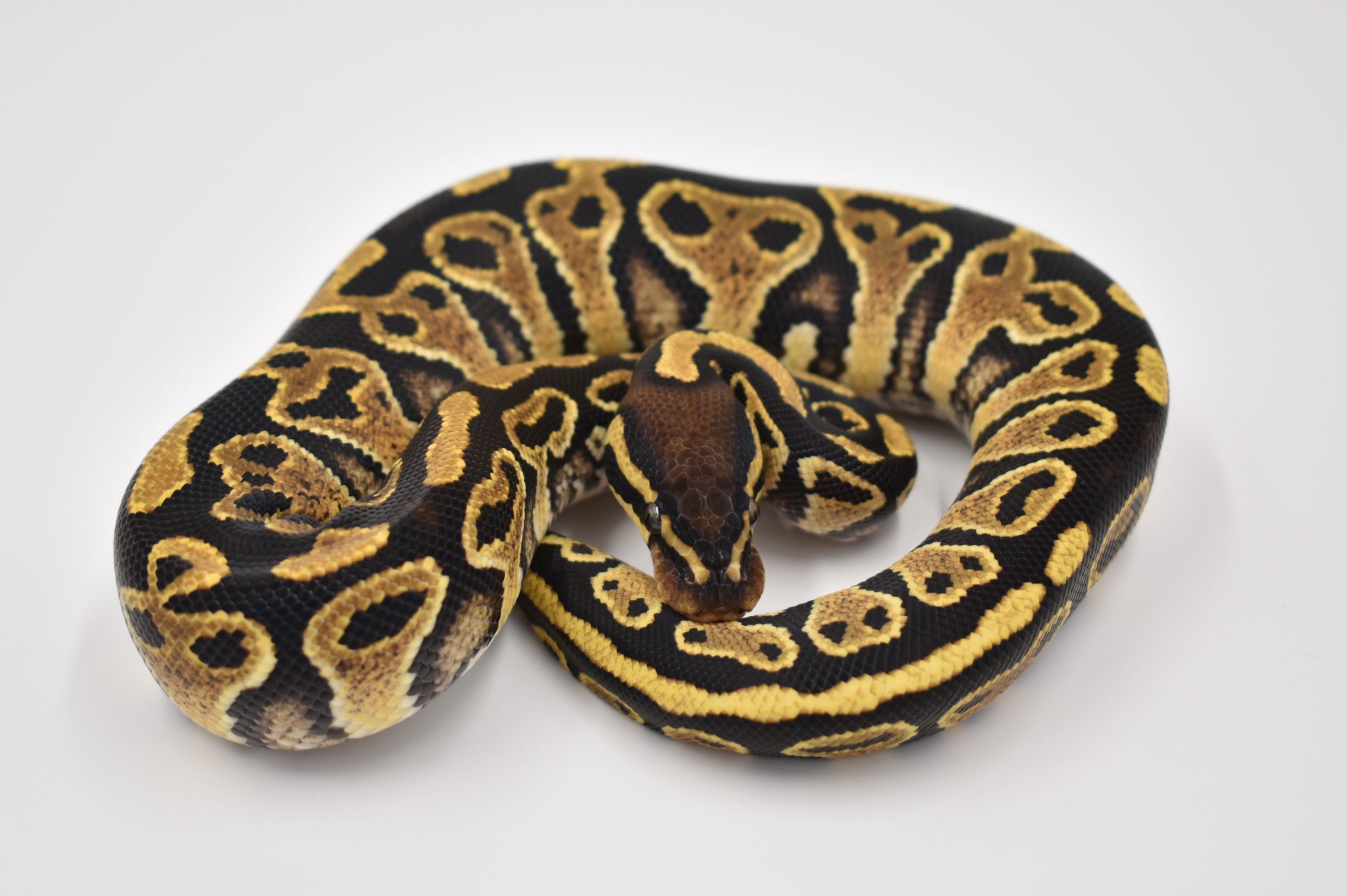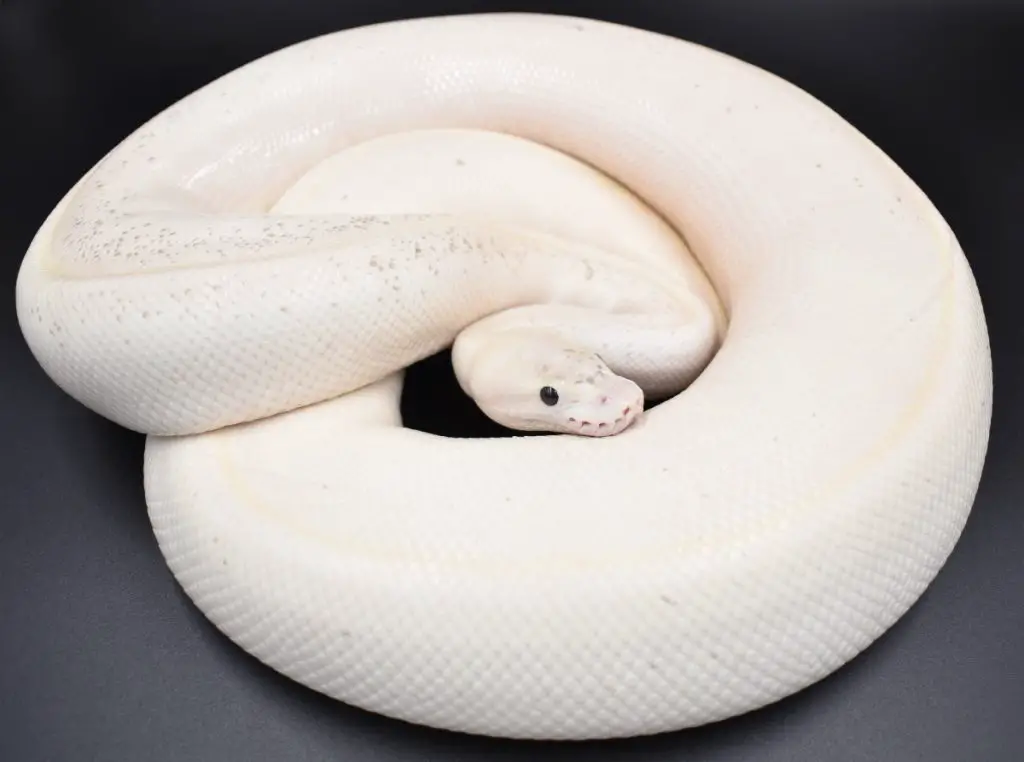Ball Python humidity and water availability are two factors that directly affect shedding. Get the humidity wrong, and you’ll end up with stuck shed after stuck shed – and a very unhappy snake. Remember: correct humidity levels can prevent stuck sheds, stuck eye caps, dehydration, and even poor appetite.
In this page, we’ll take a look at how to maintain good humidity and provide the correct water. I’ll also give you some fantastic related articles to read.
Relationship between humidity and shedding
As with temperature, the subterranean habits (not fossorial by the way – they aren’t able to dig) of this species also influence their humidity requirements. There is a persistent myth that Ball Pythons are from arid areas. Whilst they may have colonised some arid areas, the bulk of their home range is made up of savannah habitat, and the rest is either dry forest or tropical rainforest.
Even when you take into account seasonal variations in precipitation, savannah is actually far more hospital than arid habitat and maintains much higher soil humidity – something that Ball Pythons encounter in their underground lairs. For this reason, it is important to maintain a reasonably high humidity level of 60-65%. Lower than 55% will engender difficulty shedding.
Furthermore, some research suggests that very low ( -40%) and very high (+80%) can both contribute to susceptibility to respiratory infections, with the latter also being a factor in necrotising dermatitis (scale rot). Orchid bark, coconut fibre, cypress mulch and sphagnum moss are all great for raising humidity, but mist the enclosure if these are not enough.

Aim for constant humidity levels of 60-65%
Generally, if your getting your humidity to that nice 60% area, your ball python will shed just fine. If you’re struggling to maintain humidity, these snakes can shed incompletely or retain eye caps.
A good way to do this is to either mist the enclosure the day before they shed (not always easy!) or provide them with a “shed box“, also known as a humid hide.
A shed box is a plastic tub, filled with damp sphagnum moss and with a hole in the top for the snake to enter. Some snakes never actually learn to use these, but in my experience a majority of them do and it can lead to a perfect shed every time.
Summary: 55-65% humidity year round.
My top tips for maintaining good humidity levels
Let’s go through some of the best methods I’ve found for keeping humidity up during my 20+ years of keeping Ball Pythons. Spoiler alert: getting the enclosure and substrate right are top of the list!
- Pick an enclosure made of watertight materials. Plastic tubs and PVC terrariums are both excellent at holding humidity.
- Choose a substrate that holds humidity well, but resists mold as much as possible. That’s right, I’m thinking of cypress mulch and some brands of coco chips.
- Make sure there isn’t excessive ventilation. Some ventilation is necessary to prevent disease and poor hygiene. Too much, on the other hand, will let all your snake’s humidity go up in vapor (I was going to say go up in smoke, but realised any chemists reading would start sending me angry emails)
- Choose hides with narrow entrances and which are made of non-porous materials. Examples include sturdy plastic hides. When your snake is curled up in one of these, it creates a tiny, high-humidity microclimate.
- Provide a larger water bowl if humidity is always too low. More water = more humidity. Simple!
- Provide a humid hide. If you have the room, give your snake a humid hide in addition to its other refugia.
- Spray the enclosure if your home’s ambient humidity is low. If you live in Seattle and keep your snake in a PVC terrarium, you might never need to spray it. If you live in Phoenix, on the other hand, you’ll probably need to spray it every single day.
- This should be obvious but I’ll include it anyway: always keep a hygrometer in your snake’s enclosure!

How often do Ball Pythons shed their skin?
ow often ball pythons shed depends on their age, rate of growth, and whether they are going through breeding events such as ovulation. Normal shedding is referred to as ecdysis, whereas abnormal shedding is dysecdysis.
Juvenile/hatchling ball pythons should shed once a month, whereas older animals (2-6 yrs old) should shed every 6 weeks at most. Some very old animals will even shed as little as once every 8-9 weeks.
If a juvenile sheds more than once every 3 weeks, or an adult more than once a month, I suggest a vet appointment to rule out parasites or skin disease.

Water and water Bowls
There are a variety of both naturalistic and basic water bowls available. The main things to remember are a. the bowl needs to be heavy enough to not easily be knocked over, and b. the inside surface of the bowl should be as smooth as possible.
Materials that are rough or porous give bacteria, algae and moulds a greater surface area to anchor themselves to, and are harder to clean and disinfect properly. Though Ball Pythons do not generally soak, I do prefer bowls that are big enough for this just in case.
On a side note, I have read several times now that distilled water is bad for reptiles and amphibians as its demineralised state causes it to leach minerals out of animals’ bodies. Having looked into this, research and first-hand observations by herpetoculturists do corroborate this information.
I recommend that you never use distilled water for herps. If the tap water in your area is safe for fish (a decent aquatics shop will be able to tell you) then it is fine to use, if not then opt for natural bottled water.
More on this subject:
Ball Python Care topics:
- Intro
- Enclosure guidelines
- Bedding and refugia
- Heat and Light
- Humidity, water, and shedding *You are here
- Ball Python Size
- Handling
- Diet
- Health and hygiene
- Breeding
- Eggs and incubation
